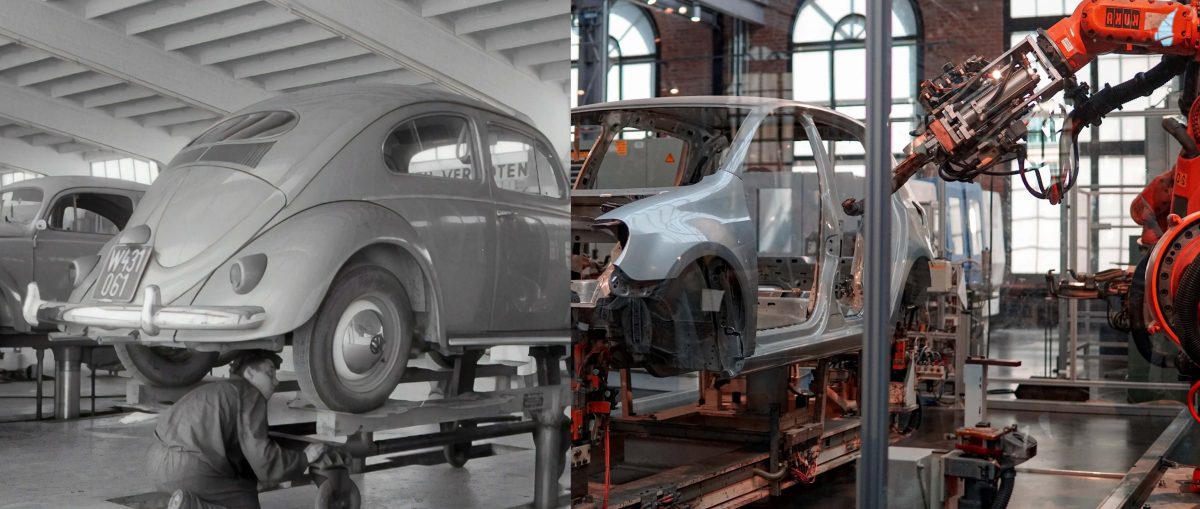The kaizen philosophy is the grandfather of many ideas and methods of improvement out there. This blog will look briefly at what kaizen is and how it compares to three other common improvement philosophies, Lean, Six-Sigma, and Poka-Yoke.
What is Kaizen?
The idea of Kaizen came from Japan. The word itself means ‘improvement,’ but it has become a philosophy for successful, continuous innovation and improvement.
It rests on breaking down goals into small, actionable daily goals and creating the processes that drive change.
Kaizen is one of the oldest philosophies of improvement. It inspired lean and six-sigma, and even contemporary development methodologies like Agile and KANBAN.
Think of kaizen as the overarching umbrella of improvement. Both lean and six sigma systematize different areas of improvement but share the same goal: improved outcomes. They vary in how they aim to achieve more value and what tools they use to get there.
What is the Lean Manufacturing Method?
Lean methodology is a way of optimizing your resources and energy towards creating the most value possible.
It’s the younger brother of kaizen and incorporates the kaizen mindset of continuous improvement with the equally important tenet of respecting people.
Businesses worldwide subscribe to the lean methodology to sustainably deliver better value for their customers and employees through sustainable and resilient organizations.
The Difference Between Lean and Kaizen
While both these philosophies can improve our results by optimizing our processes and resource usage, lean is primarily focused on reducing waste. Reducing waste or ‘Muda’ is a crucial part of the kaizen philosophy, but lean regards it as an end in itself.
What is Six Sigma?
Six sigma is another business process born due to kaizen’s industrial success in the 80s and 90s.
It aims to increase performance and decrease variation to reduce manufacturing defects and improve profits, employee morale, and product or service quality.
Where Lean focuses on reducing waste and optimizing resource usage, six sigma focuses on reducing variation.
Lean uses kaizen to achieve its workplace organization goals, whereas six sigma is more concerned with using statistics and data analysis to enact change through experimentation.
Lean, six sigma, and kaizen are mutually dependent and not mutually exclusive.
The Difference Between Kaizen and Six Sigma
Kaizen is a philosophy that demands constant self-assessment and encourages continuous improvement — but doesn’t determine the speed or significance of those changes, or in fact, whether those changes are guaranteed to succeed.
Kaizen encourages mistakes as a way of finding success, while six sigma attempts to reduce the number of errors in a process. It’s concerned with improving the quality of outcomes by creating consistent and reliable results. In the case of six sigma, ‘better’ is defined as ‘more consistent.’
What is Poke-Yoke?
Poka-Yoke is another Japanese term that came about by applying kaizen philosophy in the Toyota production lines.
Initially, the term was ‘Baka-yoke,’ which means ‘fool-proofing. To avoid negative connotations, this was later changed to Poka-yoke, or ‘mistake-proofing.’
It came about as a way to empower employees to enact change while mitigating the risk that these innovations would turn out to be a mistake. Poka-yoke is any means, tool or process that helps avoid mistakes.
One example of this is how modern cars are designed so that you cannot start the ignition without pressing your foot on the brake. This simple process probably prevents thousands of fender-benders every day.
The Difference Between Kaizen & Poka Yoke
Kaizen is a philosophy of improvement that encourages us to think of everything as poorly planned and executed, and challenges us to make mistakes to drive innovation.
Poka-Yoke is a production mindset that we can hold in our minds to help reduce the likelihood that our innovations end up being a mistake or our products cause an accident.
If you are continually seeking improvement, make sure you put systems into place to protect yourself, to foolproof your actions. Our lives are not dependable systems, but we can ‘foolproof’ our improvement by combining habits, not taking on too much at once, and remembering to give ourselves time to recover.
Which method of improvement is best?
This question is redundant in the pursuit of perfection, or even just ‘improved outcomes.’
If you want to apply kaizen to your life, think about how you can use all of these methodologies to reach your goals.
Poka-yoke, six sigma, and lean manufacturing are all systems we use in our pursuit of kaizen. We should use them all together, at different times, to help us move closer to our goals.
The best improvement method is kaizen because it does not tie us to any particular system but encourages us to experiment and try them out until we find what fits best with our goals. Each of these ‘secondary’ methodologies is a tool or an avenue through which we create our kaizen.
Phots by Austrian National Library and Lenny Kuhne via Unsplash
